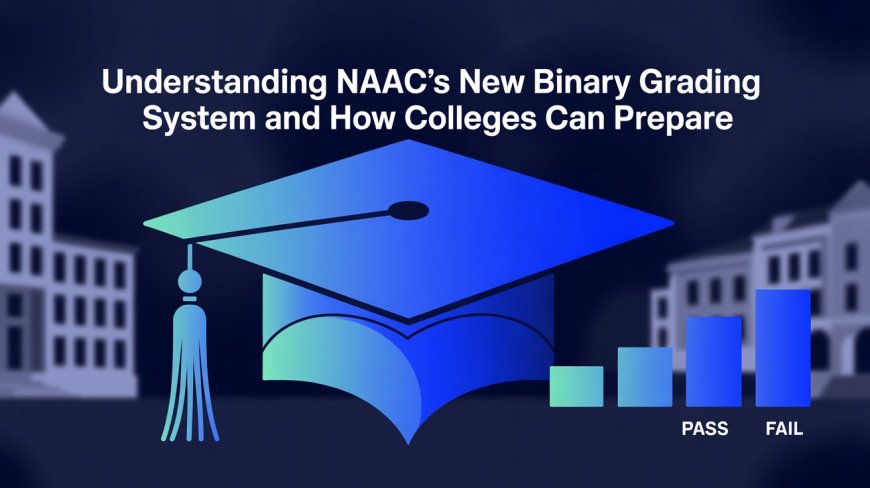Understanding NAAC’s New Binary Grading System and How Colleges Can Prepare
Department of Understanding NAAC’s New Binary Grading System and How Colleges Can Prepare

The NAAC (National Assessment and Accreditation Council) is rolling out a major reform in how Indian higher education institutions are evaluated. The traditional A++ to C grading scale is being replaced with abinary accreditation model,where colleges will be marked simply asAccreditedorNot Accredited.
Following this, institutions will move intoMaturity-Based Graded Levels (MBGL), ranging from Level 1 to Level 5 based on performance and institutional depth.
This shift is more than a grading changeits a move towardtransparency, inclusivity, and tech-driven evaluation, requiring colleges to rethink their digital readiness, documentation systems, and compliance visibility.
This change brings clarity, transparency, and reduces bias. But along with system updates, colleges must ensure theyre digitally prepared, starting with aresponsive, compliant, and content-rich website.
Whats Changed: From A++ to Yes/No Accreditation
Basic (Binary) Accreditation
-
Institutions will now be classified simply asAccreditedorNot Accredited.
-
This applies fromAprilMay 2025, simplifying outcomes and bringing more institutions into the fold.
Maturity-Based Graded Levels (MBGL)
-
Later, institutions will be placed inLevels 15, with Level 5 indicating global excellence.
Technology-Driven Evaluations
-
Physical peer visits are being replaced withe-inspections and virtual evaluations, supported by a central "One Nation One Data Platform" for transparent, credible data verification.
Why These Changes Matter
-
Transparency:Clear results mean less ambiguity and predisposition.
-
Fairness:Levels incentivise continuous improvement, not just meeting one grade threshold.
-
Inclusivity:Encourages all institutionseven in rural or remote areasto pursue accreditation.
Website Importance in the New Framework
Under the binary and MBGL systems,almost all evaluation becomes virtual,making your .edu website the crucial evaluation interface for NAAC teams.
Single Point of Truth
-
Your website must host:
-
SSR, DVV, AQAR reports
-
Supporting docs sorted by criterion or attribute
-
External validation attachments
-
Data Visibility
-
Evaluators will inspect compliance through your siteif yourdocuments are missing, slow, or inaccessible, it can lead to negative outcomes.
Speed & Accessibility
-
With virtual inspections,load timeandmobile responsivenessmatterespecially for geographically dispersed peer teams.
Audit Trail Capabilities
-
Whitecodes CMS providesversioning and logs, tracking who uploaded/updated what and when a key requirement for transparent NAAC evaluations.
How Whitecode Helps You Upgrade
Whitecodes solution is built specifically for this new era of accreditation:
- Criterion-wise document management
- Responsive, fast-loading web pages
- No-code CMS with permission logs
- Secure document access & version control
- One Nation One Data Platform integration
Conclusion: Digital Readiness is Not Optional Anymore
NAAC's shift to abinary system with e-inspections and central data validationputs pressure on institutions to be digitally prepared. Your website isnow a key interface for virtual evaluation, and updating it is essential, not optional.
?? Want your website to be virtual-inspector-ready?
Talk to the Whitecode team about building a fast, secure, and compliant site tailored for the new NAAC framework.
https://www.whitecode.co.in/home
https://www.whitecode.co.in/page/261/services




























